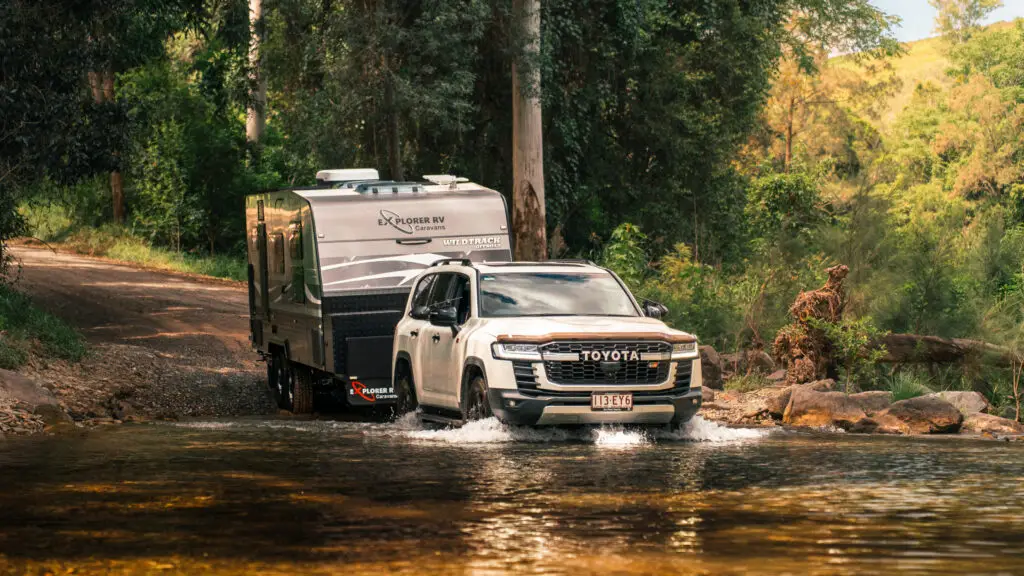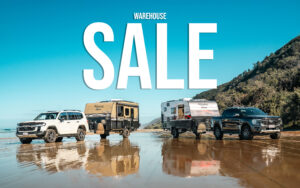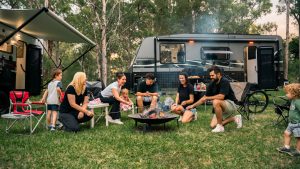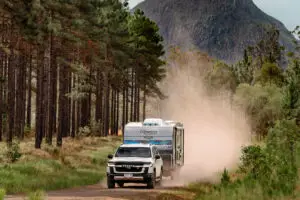Ready to leave the bitumen behind and tackle Australia’s legendary outback roads? Off-road caravanning opens up a world of adventure far beyond the holiday parks. But driving with a caravan on rough terrain is a whole different ball game than highway cruising. In this guide, we’ll share practical driving and towing tips to help you conquer Australia’s toughest tracks with confidence. Experienced caravanners (yes, even grey nomads) can always learn a new trick or two for safer, smoother off-road travels.
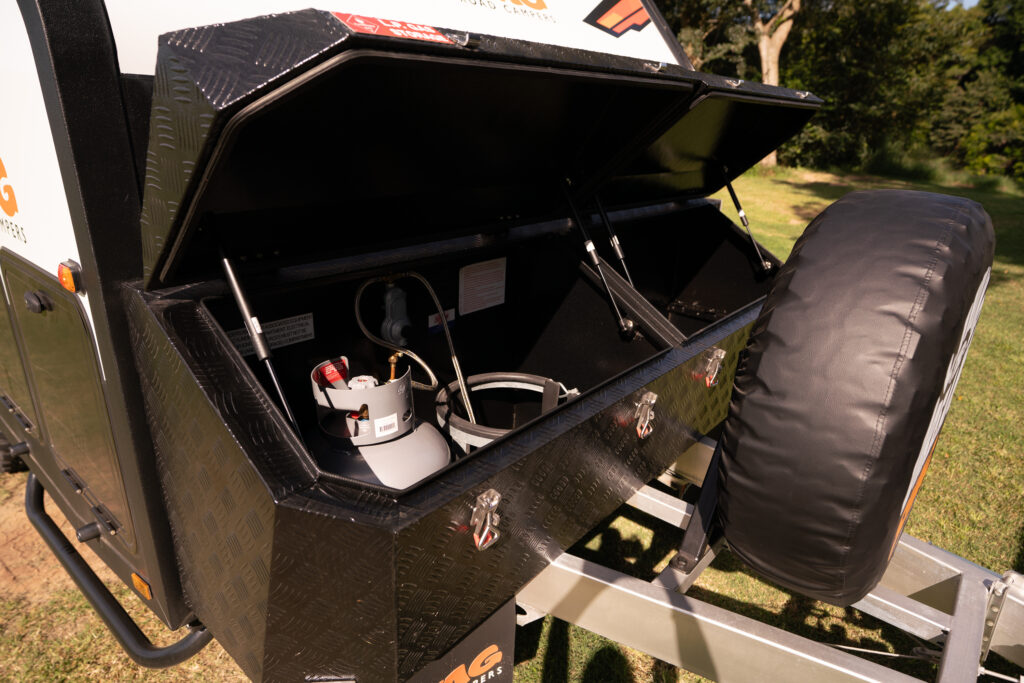
1. Prepare Your Rig Before Hitting the Dirt
Off-road success starts before you even turn down that corrugated road. Give your tow vehicle and caravan a thorough pre-trip check. Ensure your suspension and shock absorbers are in top shape, all bolts are tightened, and tyre pressures are adjusted appropriately. (On rough corrugations, many caravanners air down tyres to around 25–30 PSI to soften the ride – just remember to reinflate when back on tarmac.) Secure all items inside the van and evenly distribute weight, keeping heavy gear low and over the axle. If you haven’t already, consider adding a stone guard to your caravan’s front and protection for underbody components – flying rocks can wreak havoc on pipes and wiring. Taking these prep steps will prevent a lot of headaches on the track.
2. Slow and Steady Driving
When towing off-road, the old tortoise-and-hare rule applies: slow and steady wins. On corrugated or rutted roads, resist the urge to speed up. Keep a moderate pace (often 60–80 km/h or less, depending on conditions) to maintain control and minimize stress on your caravan. Avoid sudden braking or swerving – gentle inputs are key. Allow plenty of distance for braking on dirt or gravel. Your rig is longer and heavier, so give yourself extra room to turn and stop. If the road is really bad, don’t be afraid to crawl along in 4WD low range. Patience will get you there without damage, whereas rushing can lead to broken trailer suspensions or worse. As the saying goes, “drive to the conditions” – on outback tracks, that usually means unhurried and cautious.
3. Master Off-Road Towing Techniques
Towing a van through sand, mud, or rocky terrain requires some finesse. Cornering: Take wider turns to account for your caravan’s path, and go extra slowly on loose surfaces so you don’t skid. Climbing hills: Use low gear, maintain momentum, and avoid changing gears mid-hill. For long steep descents, engage low gear or hill descent control to save your brakes – let your engine do the work. Soft sand driving: Before entering sandy stretches (like beach tracks or desert dunes), stop and lower tyre pressures on both your 4WD and caravan. Lock hubs or engage 4X4, and take it easy – smooth acceleration, keep momentum, and don’t make sharp turns in deep sand. If you do start bogging down, back off gently (don’t floor it and dig deeper) and use recovery tracks or a shovel to get going again. Water crossings: Walk it first if unsure of depth and surface. Go slow and steady in 4WD low, keeping a constant pace to create a gentle bow wave. One vehicle at a time through water – never let a car or van stop mid-crossing. After crossing, tap your brakes to dry them and check your caravan’s brakes too.

4. Use the Right Gear (and Know How to Use It)
Off-road driving is much easier (and safer) with the proper equipment. An off-road hitch (like the Cruisemaster DO35 on Explorer RV’s Wildtrack Offroad Tandem) is highly recommended – it allows more articulation than a standard ball hitch, so your caravan can twist and roll with the terrain without stressing the connection. Electronic stability control and off-road ABS on your caravan are great safety nets, so make sure they’re activated if available. When you venture truly off-grid, carry recovery gear and know the basics of self-recovery. Essentials include a snatch strap (and rated shackles), a pair of traction boards, a jack capable of lifting your loaded caravan, a long-handle shovel, and an air compressor for re-inflating tyre.
Practice using this gear in mild conditions – the middle of nowhere is a bad place to read the instructions for the first time! Finally, a UHF radio is invaluable for communicating with other road users (e.g. to coordinate passing on narrow tracks or to call for help if needed).
5. Plan for Outback Conditions
Even experienced caravan owners can be caught out by how remote and unforgiving off-road travel in Australia can be. Always plan your route and have a paper map as backup in case your GPS or phone has no signal. Let someone know your itinerary if you’re going truly remote. Carry plenty of fuel, food and water for the journey (at least 5–7 litres of water per person per day, plus extra for your vehicle and some for emergencies). Many off-road caravans like the Explorer RV Wildtrack Hybrid X come with dual water tanks and long-range capabilities – use them. If not, bring jerry cans or water bladders for extended trips. Out bush, expect the unexpected: sudden weather changes, flash floods, or track closures. Check conditions with local authorities or fellow travellers (the WikiCamps app and Facebook groups are handy for recent updates). By being prepared and staying flexible, you’ll handle whatever the outback throws at you.
6. Know When to Call It a Day
Perhaps the best tip for off-road adventuring: listen to your instincts and your rig. If a track is beyond your comfort zone or your caravan’s capability, there’s no shame in turning around or unhitching and scouting ahead. Likewise, driving fatigued on rough roads is a recipe for disaster. Stop and make camp before sundown – driving off-road in the dark is not fun (or safe, with all the wildlife on the move). Off-road caravanning is about enjoying the journey, not just the destination. Pull over at that beautiful river camp or scenic lookout and soak it in. The whole point of having an off-road caravan is the freedom to stay in amazing places.
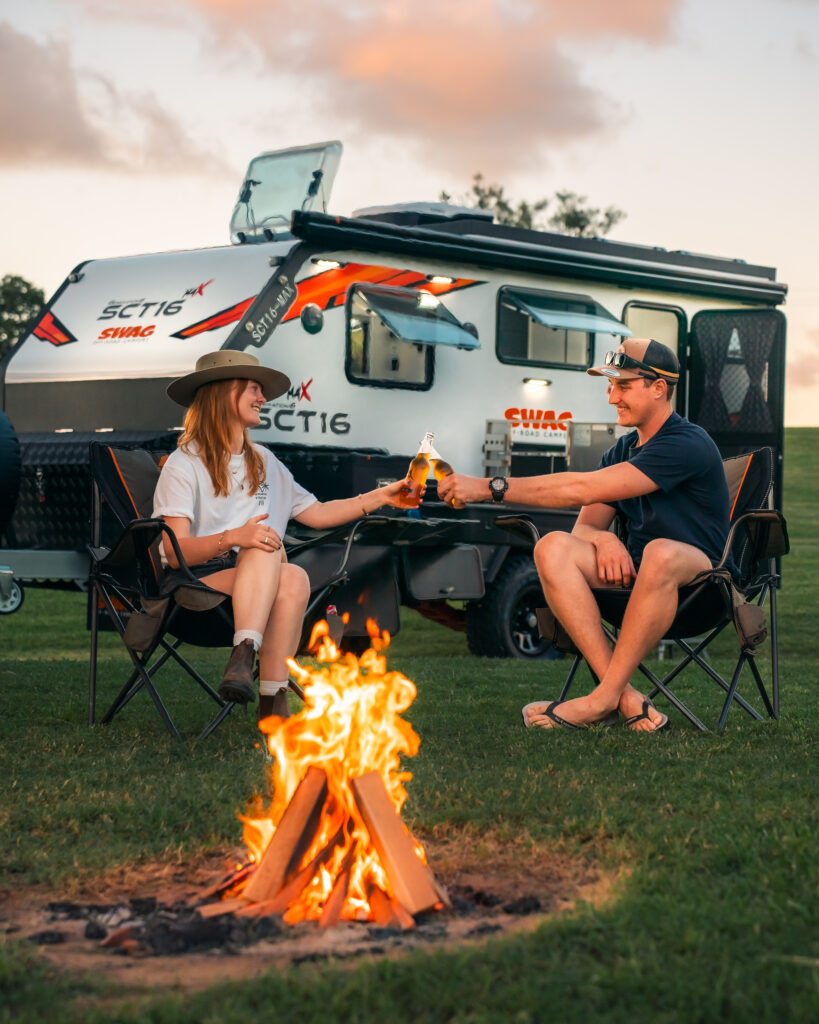
With these driving and towing tips in mind, you’ll be well-equipped to take your caravan off the beaten path. Remember, even the most rugged off-road caravan (with all the bells and whistles) still relies on a knowledgeable driver. By preparing well, driving smart and respecting the conditions, you and your trusty caravan will be able to explore those bucket-list remote destinations safely. So go forth and tackle that outback track – the real Australia awaits just past the bitumen’s end!

